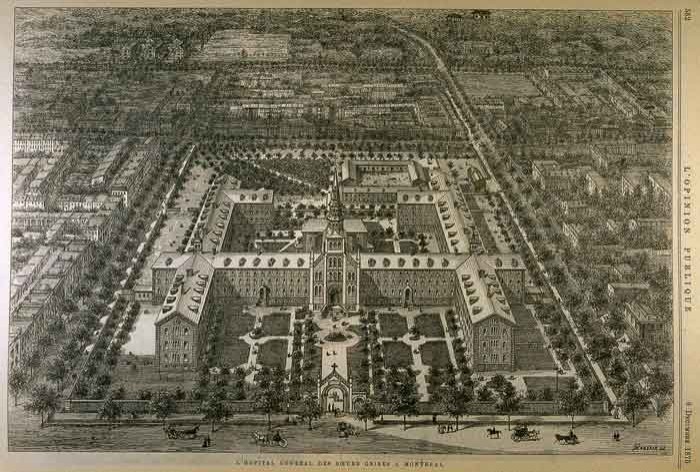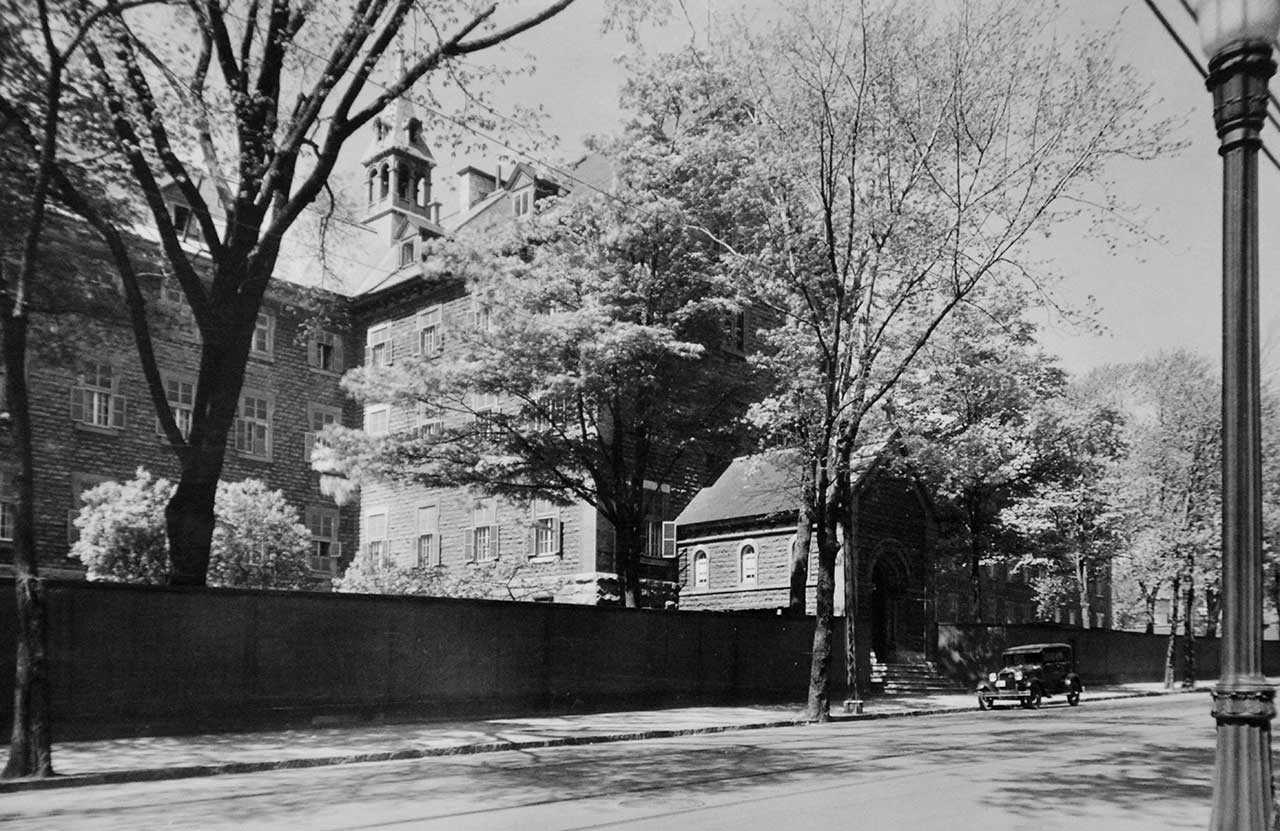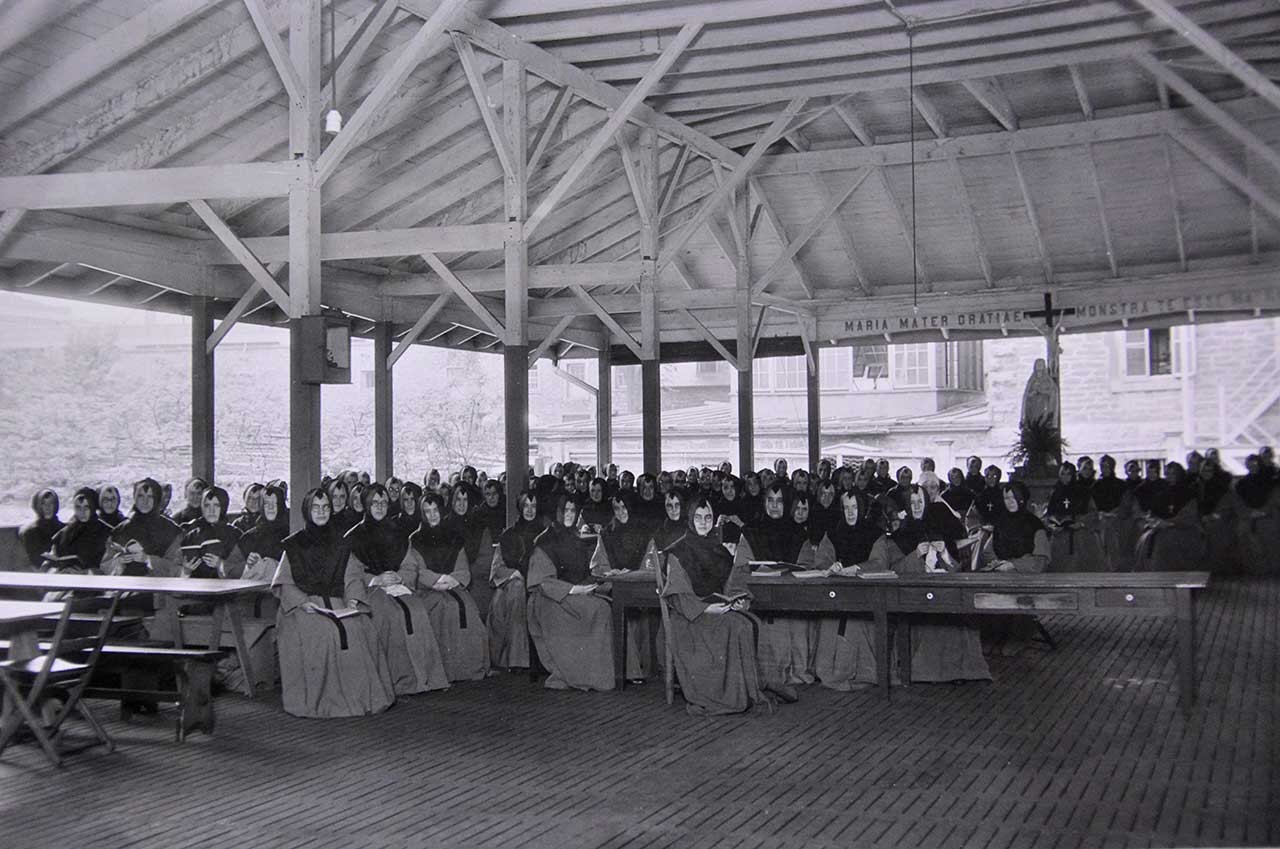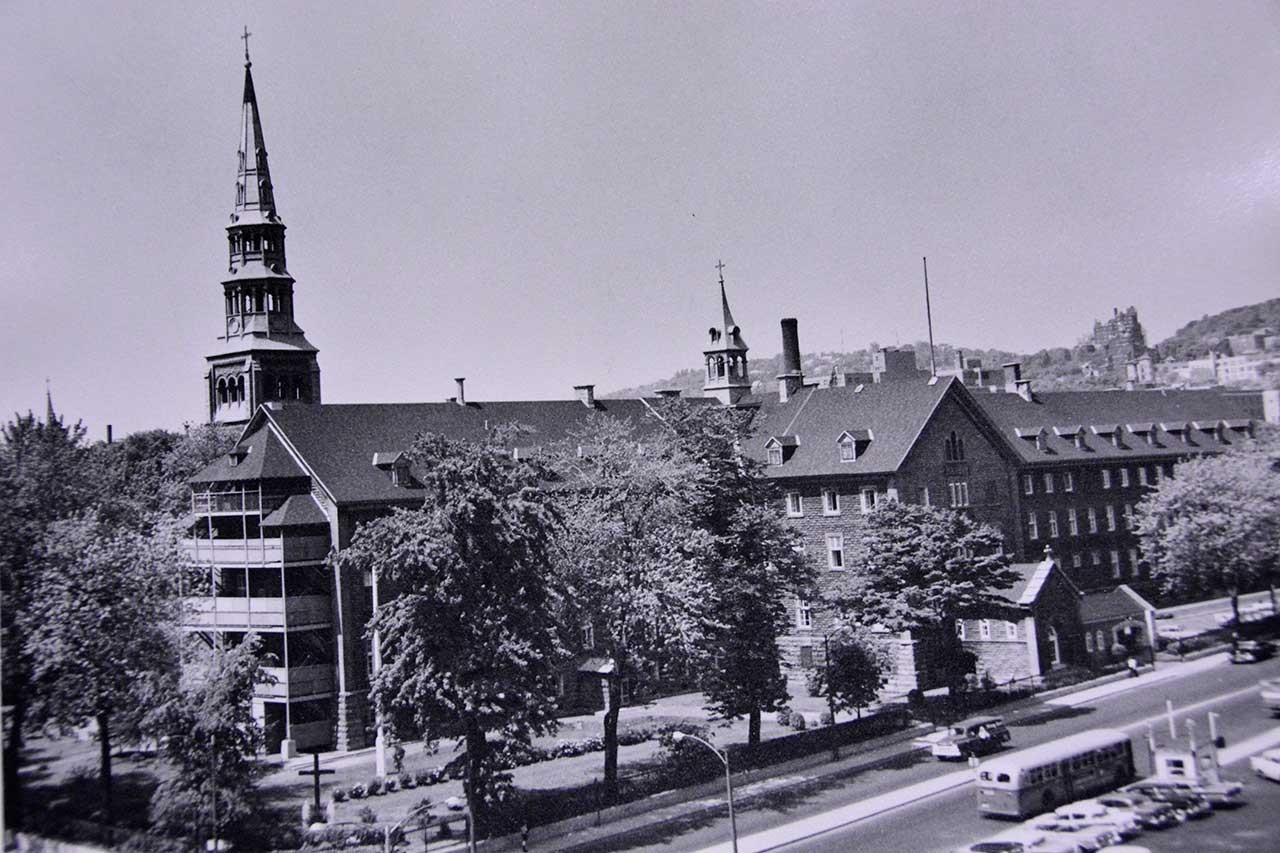THE GREY NUNS
A BRIEF HISTORY OF THE ORDER
AND FORMER MOTHER HOUSE
1700s: Beginnings in Montreal
The Sisters of Charity of Montreal, better known as the Grey Nuns, have a rich legacy of charitable service to the poor or vulnerable.
Their work formally began on December 31, 1734, when Marguerite d’Youville, the widow of a bootlegger, and three other women vowed to commit themselves to caring for those in need of medical or social services in New France.
After a series of moves between informal shelters, d’Youville and her followers took over the derelict General Hospital in Montreal’s Old Port, quickly earning a reputation for welcoming everyone through their doors.
D’Youville died in 1771 but not before envisioning an expanded General Hospital building, a goal that was realized in the 1820s and ’30s.
Mid-1800s: Expansion across North America
The expansion of the hospital mirrored the growth of Quebec’s and Canada’s populations at the time. The influx of immigrants from Europe spurred religious figures outside Montreal to recruit help from the Grey Nuns. New congregations gradually spread outward to Saint-Hyacinthe in 1840, Bytown (present-day Ottawa) in 1845, and Quebec City in 1849. By invitation, the Grey Nuns also set up services outside their home region.
Throughout the 1840s and ’50s, sisters were dispatched to isolated communities in Manitoba, Alberta, Saskatchewan and the Northwest Territories to establish shelters, schools and orphanages.
In 1855, the sisters’ work in the United States began when a priest in Toledo, Ohio, invited the Grey Nuns to start a charity in his parish. Other invitations from parishes in Massachusetts, New Hampshire, and other states soon followed, cementing the Grey Nuns’ North American network.
1860s – c. 1900: Mother House moves inland
By the 1860s, the General Hospital building had seen its share of flooding from the nearby Saint Lawrence River. Administrators discussed relocating to an area farther inland. In 1868, the decision was reached to start a new home at what is today the intersection of Guy Street and René-Lévesque Boulevard.
The Mother House, as the building became known, was designed by renowned architect Victor Bourgeau, and opened its first wing in 1871. Construction of the H-shaped complex, with an elaborate chapel at its centre, went through several phases, and was never fully completed according to Bourgeau’s plans.

Major construction stopped just after the turn of the twentieth century. With kitchen facilities, workshops, dormitories, offices, green space and gardens, the Mother House in many ways functioned as an autonomous community for its residents and visitors.
 ASGM L082_7Y13C Maison mère, entrée
de la rue Guy, s.d.
ASGM L082_7Y13C Maison mère, entrée
de la rue Guy, s.d.
First half 1900s: Grey Nuns Order thrives
In 1912, there were 68 different Grey Nuns establishments around Canada and the United States – 27 in Quebec alone. The next decades saw the sisters continue to aid the poor and infirm during such hardships as World War I, the outbreak of Spanish flu, and the Great Depression.
 ASGM L082_7Y11D Maison mère, Kiosque,
s.d.
ASGM L082_7Y11D Maison mère, Kiosque,
s.d.
Second half 1900s: Grey Nuns order declines
After World War II, however, changes in Quebec society brought on new realities for the Grey Nuns of Montreal. Increased secularization, expanded opportunities for women in the workforce, and more state-sponsored health services contributed to a steady decline of new sisters joining the order.
Yet the Grey Nuns continued to seek out charitable projects around the world, setting up education and health services in South America and Africa. Later high points in the order included the beatification ceremony of Marguerite d’Youville in Rome in 1959, as well as the declaration of the Grey Nuns Mother House as a historical monument by Quebec’s Cultural Property Act in 1976.
But as the years rolled on and fewer new sisters joined, the remaining nuns began to discuss the order’s future. With an aging community and the growing burden of maintaining the Mother House property, the Grey Nuns announced in 2004 that they would sell the grounds to Concordia University.
 ASGM L082_7Y4A Maison mère, extérieur,
s.d.
ASGM L082_7Y4A Maison mère, extérieur,
s.d.
2007 – present: Concordia preserves Mother House legacy
The university formally purchased the Mother House in 2007. Concordia administrators met with provincial and local authorities about how best to repurpose the building for academic use while preserving its valued history.
The Mother House was initially deemed the future home of Concordia’s Faculty of Fine Arts, but when the sisters moved out years ahead of schedule, the decision was made to convert much of the site into new student residences.
Renovations throughout 2013-2014 led to a total of 600 individual and group study spaces, 600 residence beds, and a carefully repurposed Reading Room in the former chapel.
With honoured guests from the Grey Nuns Congregation on hand, Concordia’s Grey Nuns Building officially opened on September 15, 2014.
In 2008 Concordia applied to designate the property to the Historic Sites and Monuments Board of Canada. The request was granted in 2012, the plaque unveiled in 2017.

